GUIDE TO RUBBER SELECTION
- By Dr. Samir Majumdar
- December 29, 2020

In the 1930s, when rubber became one of the essential commodities, selection was never a problem because we had only Natural Rubber (NR) that time. Today, beyond 2010, there are number of elastomers are being used in the industry and the choice is typically important with respect to the competitive advantage of both, durability in the service and cost.
NR was called rubber because it could have rubbed out pencil mark. When other synthetic rubbers were produced, they had also similar property of rubbing out pencil mark, but were called elastomers because NR was then typically identified as Rubber. However, both NR and other synthetic rubber (SR) together are called elastomers, because they had typical elastic properties and interestingly, all rubber and elastomers are high polymers. From the time 1930 , industries have increased many folds of time. Engineering requirement in the manufacturing industries, with respect to temperature, pressure and durability have also simultaneously increased and our demand on the applications have also been increased.
CAPTION Fig.1: Asia Pacific Total Elastomers (54%), NR+SR
With very competitive demand in the market, all rubber properties cannot be achieved only by NR. Balancing critical demand for rubber applications, that we require in our day to day life, use of SR or blending with SR has become very common practice in the industry today.
For example, other than pneumatic tyre, there is hardly any uses of NR these days in automotive industries. Uses of various grades of EPDM, Silicone rubber (Q), Nitrile rubber(NBR), Fluoro Elastomers (FKM) , Perfluoro Elastomers (FFKM) , Hydrogeneted Nitrile rubber (HNBR), Chlorosulphonated Polyethylen (CSM), Polychloroprene(CR) , Polyurethane Rubber (AU/EU), Fluorosilicone Silicone Rubber (FQ) etc. have been increased due to typical automotive parts requirement. Since automobile spares are now mostly manufactured in Asia Pacific countries, they are the largest consumer of total elastomers (Fig.1).
CAPTION Fig.2: Only SBR is the highest (47%) synthetic rubber
After NR, the next high consuming elastomer is SBR (Fig.2) because of its higher filler and oil loading capability and higher abrasion resistant quality. After SBR, the next high quantity rubber used is BR, followed by IIR (BIIR,CIIR) and EPDM. Recently silicone rubber uses have increased many fold times in Western countries, China, Japan, Korea and in India. However, the total SR uses remains highest in Asia Pacific(Fig.3).
CAPTION Fig.3: Asia Pacific Highest Consumer of SR (48%)
In critical applications, it is therefore, advisable to give considerable thought, or take advice, on the formulation of the compound. As the potential for 'tailoring' compound to specific applications is essentially limitless, it is often advisable to carry out preliminary qualification tests to ensure that the compound chosen will perform as intended by customer need.
A considerable thought in critical applications, for the formulation of the specific compound need considerable experience with selecting raw materials and art of processing. Very common mistakes by rubber compounder is mostly related to incorrect selection of (1) ingredients, (2) their doses, (3) rubber blends and (4) correct machines. Rubber compounding is an art of developing rubber mixtures with suitable raw material and their doses, that will perform in desired services but with minimum cost possible such that product can be competitive in the market and can be processed well in machines without any difficulties faced by man and machines.
There are broadly two classes of Rubbers or elastomers, they are Natural Rubber (NR) and Synthetic Rubber (SR). NR occurs naturally in the plant and hence the name but all synthetic rubbers are man made rubbers and are produced by chemical synthesis. Among the Synthetic elastomers, there is again two category; one is general purpose rubbers (GPR),which can be used as equivalent to NR, e.g., Butadiene Rubber (PBR) and Styrene Butadiene Rubber (SBR) and the other category is specialty elastomers. Specialty elastomers are generally costlier than GPR and are only used in special purpose. Following are the list of specialty elastomers ,which are widely being used in rubber industry beyond 2000:
Butyl Rubber (IIR), Chlorobutyl Rubber (CIIR), Bromobutyl Rubber (BIIR), Chlorinated Polyethylene(CM), Chlorosulphonated Polyethylen (CSM), Ethylene Acrylic(EEA) , Ethylene Propylene Rubber(EPM) , Ethylene Propylene Diene Rubber(EPDM), Fluoro elastomers (FKM), Hydrogenated Nitrile Rubber (HNBR), Isoprene Rubber (IR), Nitrile Rubber(NBR) , Polyacrylic Rubber (ACM), Perfluoro Elastomers (FFKM), Polychloroprene (CR) , Polysulphide Rubber (TR) , Polyolefin Elastomer (POE), Polyurethane Rubber (AU/EU) , Silicone Rubber(Q), Fluorosilicone Silicone Rubber (FQ) etc.
Elastomers having carbon-carbon double bond on the elastomeric backbone could be cross-linked with sulphur and accelerators. Many of these elastomers are also could be cured with organic peroxides, examples are NR,SBR,BR, AU/EU, CM, CR,CSM,EPM,EPDM,FPM,NBR,HNBR,IR,POE,Q,FQ. Elastomers that cannot be cured with organic peroxides are; ACM,IIR,CIIR,BIIR,ECO.
Rubber compounding
Rubber compounding is an art of developing rubber mixtures with suitable raw material and their doses, that will perform in desired services but with minimum cost possible such that product can be competitive in the market and can be processed well in machines without any difficulties faced by man and machines. In all rubber industry today, the biggest challenge is cost reduction of a good quality product. During selecting raw materials, therefore, the cost of these will also play a vital role in compound designing.
A rubber product might require desired physical properties and ageing properties. For this one need to add particular reinforcing filler or a suitable combination of reinforcing fillers to have desired physical properties. The typical ageing resistant property may be achieved with only NR by adding suitable anti-degradants or, NR could also be blended with synthetic elastomers with better ageing resistant property. NR being cheaper and easily available it is the first choice having good strength, abrasion , tear strength and low heat development in dynamic condition. A synthetic rubber product might require good green strength , in that case either NR or blend of rubber is the choice. For example, for better green strength of CIIR, it is often blended with NR.
CAPTION Fig.4: Turn-up Bladders
A rubber product may require a specific need , say air retention property or oil resistance property. For the former case the choice is essentially butyl rubber (or, halobutyl rubber , CIIR,BIIR) and for the later it is usually, NBR/HNBR and for both oil resistance and air impermeability, the usual choice is NBR / HNBR rubber (Turn-up bladder for tyre building operation, Fig.4). For a typical product, if the property demands oil resistance at 200 0C, then the choice is FKM (Fluoroelastomers) or Q. For resistance upto 328 0C , it is FFKM.
CAPTION Fig.5: Typical Industrial Gaskets
Heat resistance property is typically related to product durability and sustainability at desired temperature and is very important for various industrial gaskets (Fig.5). For temperature resistant rubber compounding and following temperature resistance of the polymer is important, NR ~ 65 °C, SBR ~ 75 °C, NBR ~ 110 °C, HNBR ~ 180 °C, Q ~ 200 °C+, FKM ~ 240 °C, FFKM ~ 328 °C. The temperature ranges quoted are only a rough guide, because the temperature resistant property also depend on the typical compound design as well, depends upon the particular application, and may depend on detailed differences between alternative versions of the same rubber.
Rubber compound is always developed as per customer need. For any rubber article, the first choice is the selection of right rubber. Rubber is selected mostly on the basis of :
- Cost
- Heat and/or Oil Resistance
- Temperature Requirements
- Energy Absorption
- Seal Ability
- Flex Resistance
- Water Resistance
- Gas Impermeability
- Electrical Properties
- Abrasion Resistances
- Dynamic Properties
- Flame Resistance
Rubber compound related definitions
- Elastomer, a polymeric material that recovers substantially to its original shape after significant deformation at room temperature.
- Compound, a mixture of elastomer and other materials that is intended to process (mold) satisfactorily and meet end-use specifications.
- Filler, a particulate material added to an elastomer that modifies both the workability and the end-use behavior of the resulting composition.
- Plasticizer, a material added to an elastomer to improve its workability.
- Resins are added to improve rubber tack.
- Waxes also used as plasticizer , are also added for smooth finish of rubber articles.
- Antioxidant, a chemical added to a compound to slow or prevent oxygen attack on the compound.
- Antiozonant, a chemical added to a compound to prevent ozone attack.
- Cross linking agent, a chemical added to a compound to link the long molecules in a polymer together, or to assist in the cross-linking process.
- Accelerator, a chemical added to a compound to increase the rate of cross-linking in the compound.
- For example, sulfur links the long molecules, while an accelerator increases the cross-linking rate.
- Retarder, a material added to an elastomer compound to delay the onset of cross linking (scorch).
- Vulcanization is same as cross-linking but with sulphur.
- Peroxide also helps in cross-linking process.
Elastomer blends
Elastomer blends often creates problem when two different types of unsaturated rubbers are mixed and vulcanized together. For example, NR and IIR have two different unsaturation level and hence both sulphur , ZnO and black flows more towards polar rubber, on NR phase, and results undercure in IIR phase and the resultant blend vulcanizate becomes spongy and cannot be used.
GPR (NR,SBR,BR) rubber could be blended to any proportion. For higher synthetic rubber level (BR,SBR) , accelerators dose is often adjusted to higher side and sulpur level is adjusted to lower side, because for equivalent curing, BR, SBR requires more accelerators as compared to NR. Stearic acid is added 2-3 phr with only synthetic elastomer and for NR, stearic acid dose of 0.5 phr is enough.
CAPTION Fig.6 : Micro Dispersion of Rubber Blends
Practically most of the polymers are not miscible to 100%, polymer blends usually consist of micro-dispersion of one rubber into the other rubber and this results after intensive mixing of these two different polymers. These micro dispersed rubber often has dimensions around 0.1-1.5 nm(Fig.6). When fillers are also mixed into such blends, a situation may develop in which the filler unevenly distributed between two phases. Such uneven distribution of fillers, naturally effects the uniformity of compound physical properties. In most blends the effect on the properties of blended elastomers depend on:
- The polymer compatibility
- Distribution of fillers in different phases and
- The degree of cross-links between rubber phases
Though NR,SBR,BR could be blended to any proportion , yet the blended phases are not compatible to hundred percent and there is also phase separation, where, on proper identification one can witness that there is phase separation with NR & SBR, NR & BR, BR & SBR. However, upon proper mixing these phase differences could be minimized (Fig.7) such that the resultant blend gets cured almost homogeneously . That is why very highly dispersed NR (5 to 10 parts) could also be co-cured with IIR.
CAPTION Fig.7 : Well Dispersed Rubber Blends
IIR cannot be blended with GPR but can be blended with EPDM (having ENB diene content between 2-3 mole%) to any proportion. Higher diene content EPDM rubber (ENB, >9.0% mole) could be well blended with GPR. If high diene content EPDM is blended with IIR, filler, sulphur, accelerator and zinc oxide flows more towards EPDM than IIR. IIR could be blended with CIIR and BIIR to any proportion. Such blend is often used in making tyre inner-tubes and hose jacket compounds. When CIIR and BIIR doses are on the higher side with IIR (>60phr) it is worthwhile that zinc oxide is added in the final batch since zinc oxide is curative for CIIR & BIIR.
Besides zinc oxides, CIIR and BIIR can also be cured with sulphur/accelerator system as well. However, for very good heat resistant property, they are often cured with ZnO. Highly dispersed plastic (LDPE) could also be blended with CIIR/BIIR with no detrimental effect but with improvement on air permeability.
CIIR and BIIR could be blended to any proportion with GPR. Such blend is often used in tyre inner liner. When CIIR and BIIR doses are on the higher side (>60phr) both zinc oxide and amine type anioxidant/antioxonates are added in final batches as these are curatives in CIIR and BIIR.CIIR blend with GPR and EPDM is used in PC sidewall for glossy finish sidewall and addition of CIIR also help to reduce the curing time of PC tyre. Blend of EPDM/NR/SBR and EPDM/NR/SBR/CIIR are often used in tyre side wall compound for better look.
CR rubber is not normally blended in the industry as it is mostly used in adhesive industry. However, they can be blended to any proportion with GPR. In adhesive industry crystallinity is important and CR gives the highest degree of crystallinity among all general-purpose rubber. CR could be blended with IIR , close to 5-15 phr, for bladder making and in general, only 5.0 phr is added in the beginning of the mixing cycle.
In bladder mixing, Zinc oxide could be mixed with CR in master batch. CR is premasticated in mixing mill for making bladder compound, before adding in Banbury.CR/BR blend is used in hose covers.CR could also be blended with GPR at any proportion like CIIR. Both zinc oxide and amine type antioxidant / antioxonates are added in final batches as these are curatives in CR and CIIR.
In general Silicone rubber (MQ,PMQ,VMQ) cannot be blended with any other rubber because of phase difference problem but highly dispersed EPDM could be blended with it upto 10 -15 phr. EPDM/Q blend is used in heat resistant cover roll compound.
EPDM, being a good elastomer as weather resistant and heat resistant is often blended with number of other elastomers to get the benefit of the vulcanisates.
EPDM/CR blend are very popular in making gaskets. EPDM/IR blend is widely used in car wiper rubber blades. EPDM/SBR blends are used in gaskets, sponges and hose stocks. EPDM/CSM blend is used in transmission belt, conveyor belt and in hose covers. EPDM/LDPE blend is very popular in making cable insulation compound.
NBR in general, is not blended with other elastomers as this rubber having higher degree of polarity , is exclusively used for oil resistance property. It may have acrylonitrile content ( ACN) ranging from 18-50%. Incase of higher oil resistance, the elastomeric grade is selected with higher ACN. For better abrasion however, 10-20 phr of BR could be added to NBR with the aid of good dispersing agents , used in shoe sole, high abrasion resistance rolls and in conveyer belts. Higher ACN content will have better abrasion property. NBR could be cured both by sulphur/accelerators or by peroxides. Hydrgenated NBR (HNBR) has emerged into market with better heat resistant property as compared to NBR. For intermediate heat resistant property NBR and HNBR could be blended.
NBR/SBR blends used in hydraulic hose tubes, high pressure hose, belt cover, idler roll compounds and in gasket compounds. NBR/PVC blend and NBR/PVC/BR blend are used for roll cover compound, very popular in electric cable insulation and in closed cell sponge applications in shoe industry. XNBR/PVC blend is used for heavy duty cable jackets, roller cover, belt cover, hose cover stocks etc. NBR/IR blend and NBR/TR blend is popular in colored or non-black roll covers. The later is mostly used in printing roll cover compound.
Flexsys Develops First Viable Industry Alternative to 6PPD in Major Breakthrough for Tyre Chemistry
- By TT News
- December 02, 2025

Flexsys has created what it says is the tyre industry’s first practical and scalable alternative to 6PPD, marking a major step toward replacing a chemical used for decades but now under regulatory pressure.
The company said the new antidegradant is the result of several years of research and testing with federal laboratories, independent scientific groups and tyre makers. Early results show the material could match the performance and safety of 6PPD while avoiding the environmental risks linked to 6PPD-quinone, a transformation product identified in 2020.
Flexsys said the new chemistry provides the short- and long-term protection needed to stop tyres cracking or ageing. It is also designed to fit into existing rubber compounds with minimal changes, which could help manufacturers adopt it quickly. The company added that the product meets environmental and regulatory benchmarks, including criteria set by the Washington State Department of Ecology.
Importantly, the new molecule is not part of the “PPD” family, meaning it does not form quinone during use. Flexsys said this would remove the environmental impact associated with 6PPD-quinone. The company is also using many of the same intermediate chemicals already used in 6PPD production. This could allow manufacturers to rely on existing factory assets and speed the shift to the new technology.
“This achievement reflects our unwavering commitment to responsible innovation, built on decades of expertise in tire protection chemistry,” said Carl Brech, Chief Executive Officer of Flexsys. “Our solution is formulated to deliver the performance and reliability that tire makers expect and is designed for future environmental and regulatory standards.”
6PPD has been essential to tyre durability for 50 years. But studies published in 2020 showed that 6PPD-quinone could harm aquatic species, including coho salmon. Regulators and tyre producers have been looking for a safer option since then. Flexsys said its new antidegradant meets this challenge without reducing tyre safety.
“Our team set out to develop a next-generation antidegradant that meets the tire industry’s highest performance standards without compromising tire safety, while also reducing toxicity,” said Neil Smith, Chief Technology and Sustainability Officer. “I could not be more proud of the perseverance and dedication of the Flexsys R&D team. Our group has been highly motivated by both the technical challenges of this project as well as the positive societal impact that this work will ultimately have.”
Flexsys acknowledged support from the Sustainable Polymers Tech Hub in Akron, Ohio, part of the U.S. EDA Tech Hubs programme.
The company is now working on process optimisation to allow large-scale production. It is also in discussions with regulators around the world to secure approvals for commercial use. Testing with tyre makers is continuing.
“Flexsys is helping set the direction of the tire industry for the coming decades with this development,” Brech said. “We will continue to work tirelessly to bring this breakthrough to the market as soon as possible.”
Wacker, SICO Open China R&D Centre to Speed Rollout of Specialty Silanes
- By TT News
- December 02, 2025
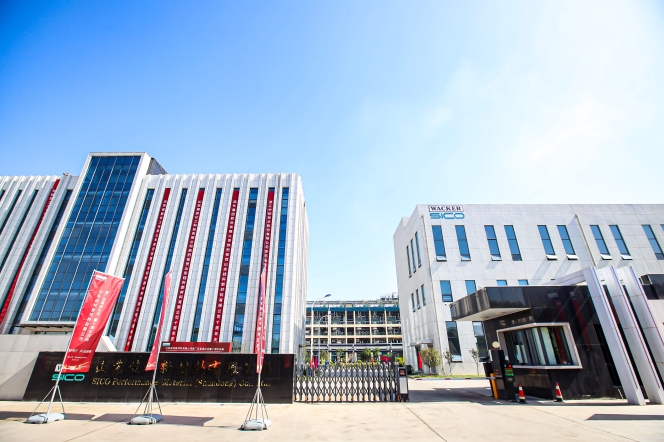
Wacker Chemie AG has strengthened its position in China’s fast-growing market for silicone specialities by opening a new application development centre with joint-venture partner SICO Performance Material in the eastern city of Jining.
The 2,300-square-metre facility brings together several laboratories focused on organofunctional silanes, which are used as high-performance additives in plastics, coatings and adhesives. By locating the centre next to SICO’s production and scale-up lines, Wacker aims to shorten development cycles and move new products into the market more quickly. The companies said investment in the site is in the mid-six-figure euro range.
Tom Koini, who leads Wacker’s silicones division, said the opening marks an important step in its China strategy. “As a provider of innovative silicone specialties and solutions, we can use this development center to achieve a key milestone for our business in China. Our focus is on high-margin specialty silanes, for which demand in China is rising continuously. This investment together with our partner SICO strengthens our presence and commitment to the region,” he said.
Wacker, which took a majority stake in SICO in 2022, is seeking to build a larger share of China’s specialty chemicals market, where demand for hybrid polymers has increased for years. These materials help improve the mechanical and chemical properties of adhesives, sealants, coatings and engineered plastics, all of which are used in sectors such as electric mobility, electronics and power equipment.
At the opening ceremony, SICO General Manager Kevin Qu called the centre an investment in the long term. “We can now pool all of our silane expertise here at our application development centre. This know-how ranges from chemical product properties and supply chain matters through to questions of process engineering and current marketing trends. We will leverage this in-depth knowledge to develop forward-looking innovations for our customers. This marks a new chapter of success in the history of our joint venture,” he said.
The companies said the centre will act as a link between research, technical service and manufacturing teams. Scientists will focus on developing additives, adhesion promoters and stabilisers based on organofunctional silanes and functional silicone fluids.
- Association of Natural Rubber Producing Countries
- ANRPC
- Natural Rubber
- Monthly NR Statistical Report
ANRPC Publishes Monthly NR Statistical Report For October 2025
- By TT News
- November 29, 2025
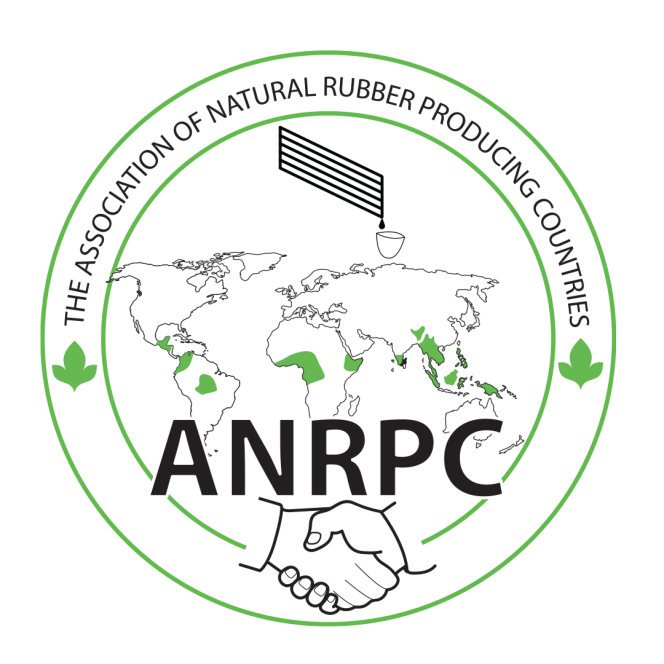
The Association of Natural Rubber Producing Countries (ANRPC) has released its Monthly NR Statistical Report for October 2025, providing an overview of key developments in the global natural rubber sector.
According to the report, the global natural rubber market in October was characterised by a distinct bearish trend in pricing. This decline can primarily due to a significant surge in production and export activities, which were initially stimulated by the higher prices seen earlier in the year. Meanwhile, overall demand has remained relatively subdued.
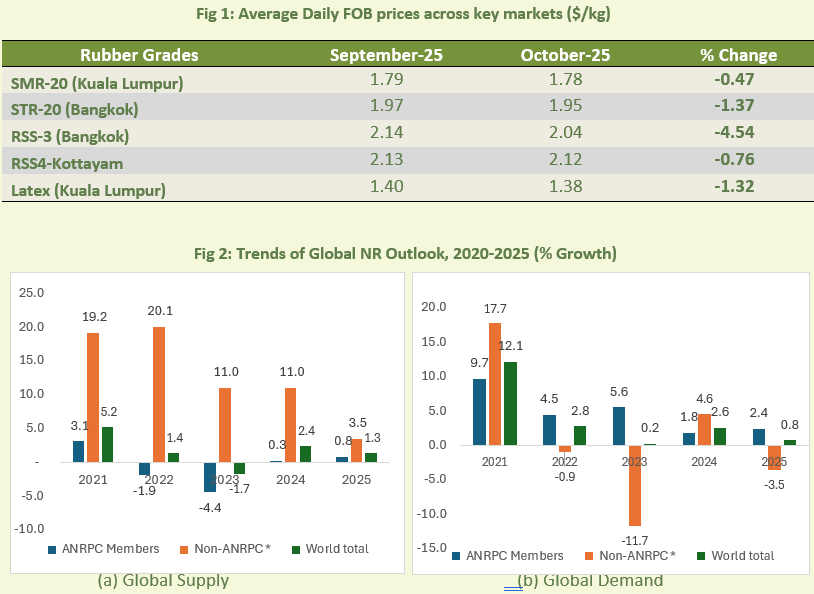
Looking ahead to the full year, projections indicate a modest 1.3 percent increase in global production for 2025, a figure that follows a recent downward revision for Indonesia. On the demand side, consumption is anticipated to grow by a slight 0.8 percent, influenced by an upward adjustment to Indonesia's consumption data. Despite the current price pressures, market sentiment shows some mixed signs of improvement, particularly within the tyre trade of certain specific markets.
DuPont Breaks Ground On Major MOLYKOTE Lubricants Plant In China
- By TT News
- November 28, 2025
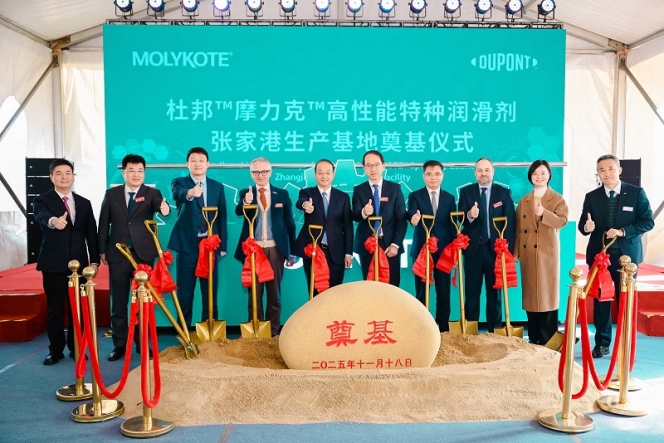
DuPont commenced construction on a new MOLYKOTE speciality lubricants production facility in Zhangjiagang, Jiangsu Province, East China, on 18 November 2025 with a groundbreaking ceremony that was attended by Senior DuPont leadership from the MOLYKOTE business and the Asia-Pacific region, alongside government officials and key customers. This strategic investment, situated within the Yangtze River International Chemical Industrial Park, is projected to be fully operational by the beginning of 2027. The initiative is a key component of the brand's global expansion, designed to significantly enhance its responsiveness to regional market needs and foster local innovation.
The new plant will primarily focus on meeting the robust and growing demand for advanced lubricant solutions across several critical sectors in China, including transportation, industrial manufacturing, energy and electronics. By establishing a local manufacturing presence, DuPont aims to create a dynamic platform for collaboration with regional customers. This will enable the company to deliver next-generation lubricants with greater speed, precision and agility, ultimately shortening lead times and strengthening supply chains.
The MOLYKOTE brand, with a legacy spanning over 75 years, is globally recognised for its expertise in solving complex lubrication challenges and improving energy efficiency. Its comprehensive product portfolio, which includes greases, oils, anti-friction coatings and pastes, serves the automotive and industrial maintenance, repair and overhaul markets worldwide. Supported by a global network of manufacturing and research facilities, the brand continues to build on its reputation for performance and reliability.
Eugenio Toccalino, Vice President and General Manager, DuPont MOLYKOTE, said, “Today’s groundbreaking is the beginning of a new chapter in our journey to better serve our customers in China, innovate faster and to be a partner of choice for solving wear and friction challenges across industries. This facility will boost local capabilities for application and new formulation development, empowering customer collaboration and response in real time.”
Yi Zhang, Global VP and Regional President, DuPont Asia Pacific, said, “We are thrilled to be breaking ground on the MOLYKOTE China production facility in Zhangjiagang. This manufacturing unit will enable us to address current needs and future trends for speciality lubricants. It reflects our confidence in the long-term potential of customers in China and Asia-Pacific region and reinforces our commitment to deliver faster, more resilient and locally tailored solutions.”


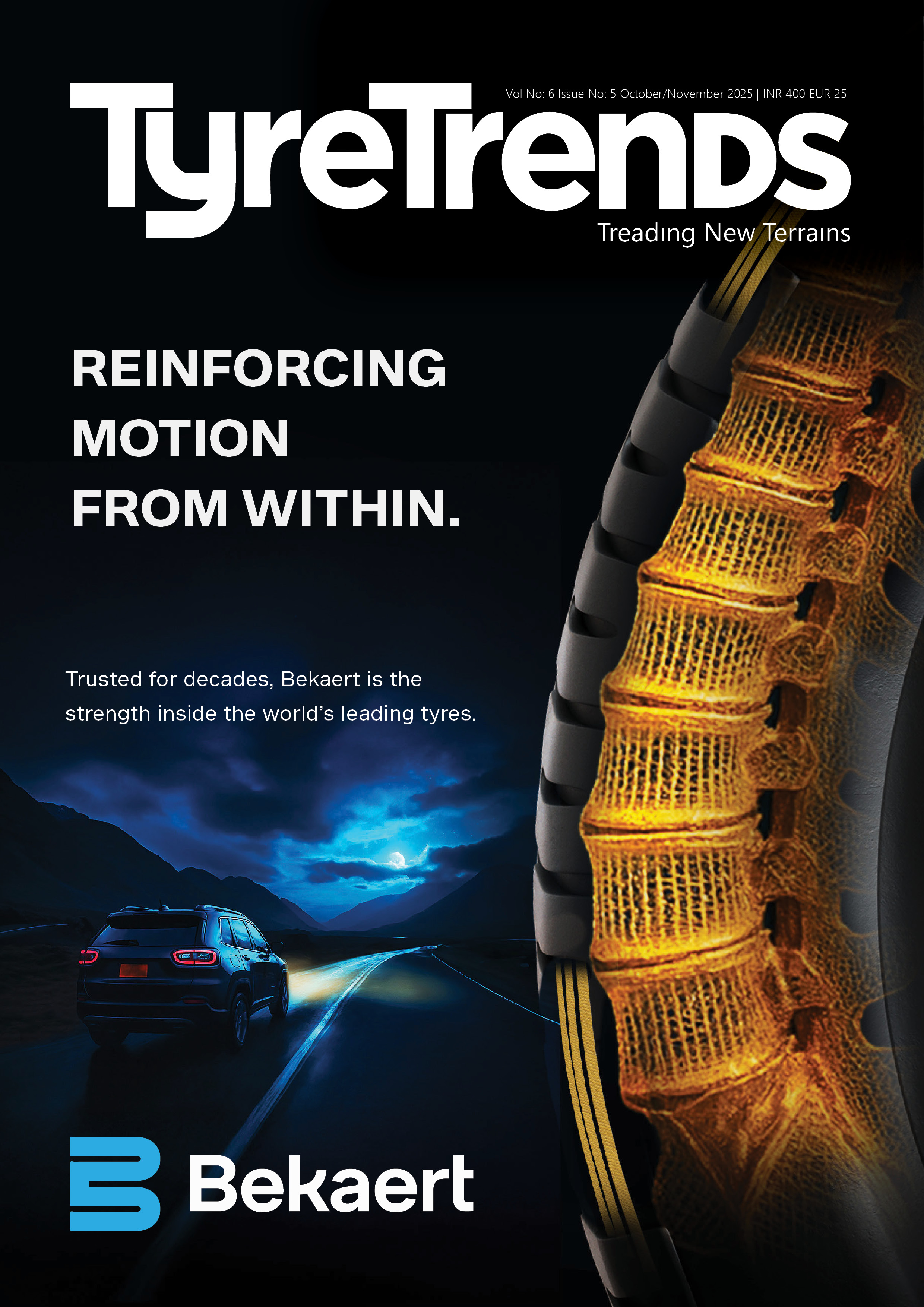




Comments (0)
ADD COMMENT